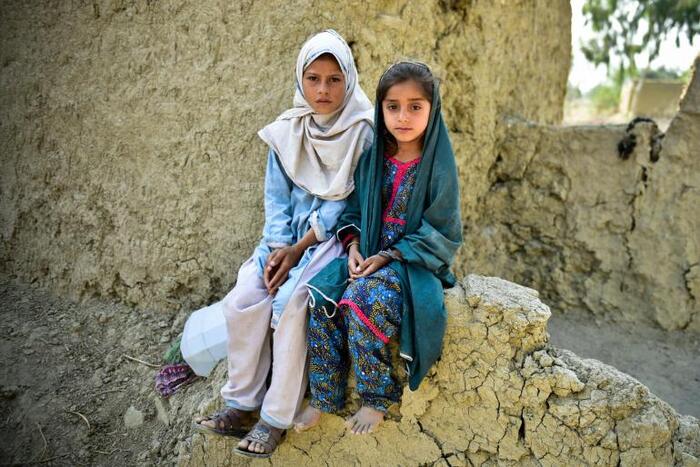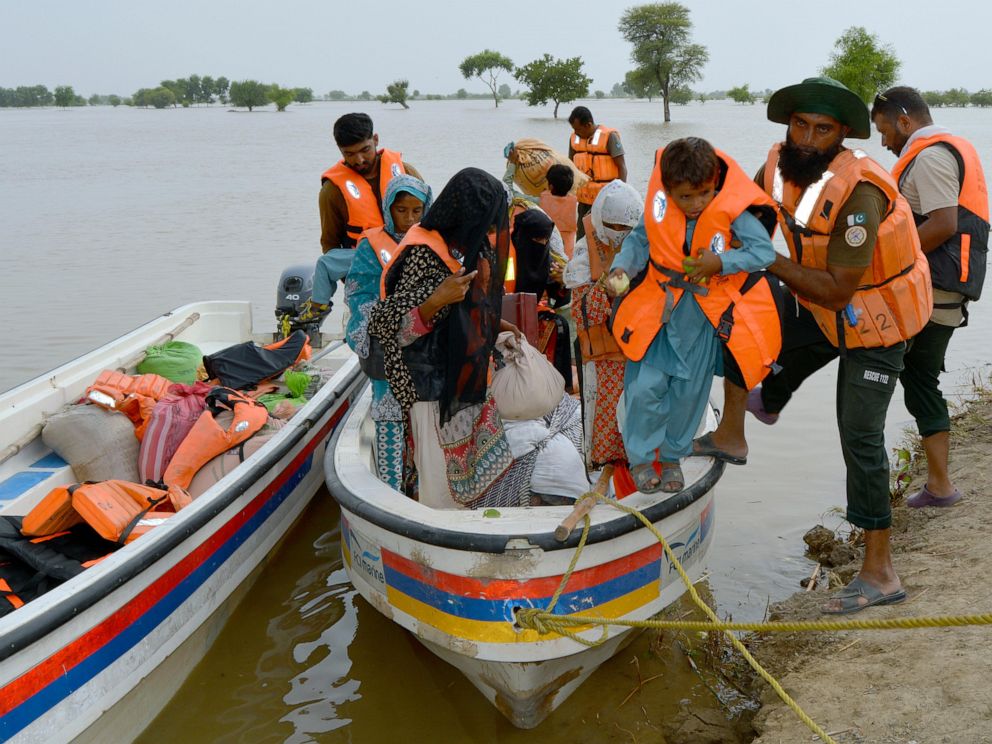Asia
Pakistan in dire need of foreign aid

At least eight million people, including children in Pakistan still don’t have access to clean water one year after catastrophic floods that ripped through the country last year, leaving billions of dollars in infrastructure loss.
This season’s monsoon rains are worsening already challenging conditions for flood-affected communities, tragically claiming the lives of 1,600 people, including 87 children in Pakistan’s northern mountain regions last year. The floods submerged a third of the country and also impacted an estimated 33 million people, leaving tens of thousands stranded on the road without any food to ear or clean water to drink.
“Vulnerable children living in flood-affected areas have endured a horrific year,” said Abdullah Fadil, UNICEF Representative in Pakistan.
“They lost their loved ones, their homes and schools. As the monsoon rains return, the fear of another climate disaster looms large. Recovery efforts continue, but many remain unreached, and the children of Pakistan risk being forgotten,” he added.
About 30,000 schools, 2,000 health facilities and 4,300 water systems were also damaged or destroyed, according to UNICEF.
Over 1.5m children require lifesaving nutrition
Over 1.5 million children require lifesaving nutrition interventions in flood-affected districts, while UNICEF’s current appeal of $173.5 million to provide life-saving support remains only 57pc funded.
The climate-related disaster deepened pre-existing inequities for children and families in affected districts. One third of the children were already out of school before the floods, malnutrition was reaching emergency levels and access to safe drinking water and sanitation was worryingly low.

Rescue workers evacuate villagers through a boat from a flooded area of Pakpattan district of Pakistan’s Punjab province, Wednesday, Aug. 23, 2023. Rescuers have evacuated more than 100,000 people from flood-hit areas of Pakistan’s eastern Punjab province in the past three weeks. (AP)
UNICEF was able to reach 3.6 million people with primary health care services, but it is not enough as they called for more support from the international community. “We were able to bring safe water for 1.7 million people in area where water networks were damaged or destroyed, reaching over 545,000 children and caregivers with mental health and psychosocial support,” according to UNICEF.
Another 2.1 million children were screened for severe acute malnutrition, a condition where children are too thin for their height – and admitted 172,000 children for lifesaving treatment.
Pakistan scrambling with severe economic crisis
“UNICEF calls on the government of Pakistan and partners to increase and sustain investment in basic social services for children and families. We must build back climate-resilient systems that bridge equity gaps and reduce vulnerability to climate shocks. We cannot forget the children of Pakistan. The flood waters have gone, but their troubles remain, in this climate volatile region,” said Fadil.
The flooding came when Pakistan was already scrambling with a severe economic crisis, further compounding the economic misery of the over 230 million population of Pakistan.
Fragile economy has already pushed families into poverty, leaving many unable to afford essentials such as food, fuel, medicines and other daily needs.
The nation’s further grip into political chaos, detrimental to their economy, engulfed the nation for several months that eventually led to the arrest of former Prime Minister Imran Khan on corruption charges that sparked deadly protests.
Last year, Khan was dramatically ousted from power in a no-confidence vote, but he accused the army and the opposition for steering allegations against him.
Pakistan has a rocky history with IMF
However, Pakistan had another chance to work to remove corruption and carry development projects to improve its economy when the International Monetary Fund (IMF) approved a $3 billion bailout for the cash-strapped nation.
Pakistan has a rocky history with the IMF as the loan started even in 2019 but Pakistan repeatedly failed to meet some of the fund’s requirements, where experts warned that without funds, Pakistan was at risk of default due to its dwindling foreign exchange reserves.
Meanwhile, according to IMF data, Pakistan’s poverty rate has reached a staggering 21.9 pc, covering more than one fifth of the population.
Pakistani rupee hitting an all-time low against dollars
In the meantime, today (Friday) in the last day of the grueling business week, the Pakistani rupee plummeted further into an abyss of devolution.
In the interbank, the US dollar had breached the once-unthinkable threshold, reaching an unprecedented historic level of Rs301, according to local news agency Samaa.
Photo: SAMAA/File
Indeed, the alarming devaluation of the rupee is closely tied to political instability, highlighting the pressing need for consensus among the country’s political factions. Many Pakistani experts say that a solution on the reducing the devaluation could be found through political dialogue and political stability inside the country.
From 2018 to 2022, Pakistan experienced significant economic fluctuations, and the sole reason is political upheaval following the Panama Papers scandal and the then Pakistan’s Prime Minister Nawaz Sharif’s impeachment triggered economic uncertainty, triggering the country toward economic adversity.
However, with the onset of Khan’s tenure and with the approval of the IMF program aimed at economic stabilization, nothing has changed and today the Pakistani rupee hitting an all-time low at Rs 301 against the dollar.